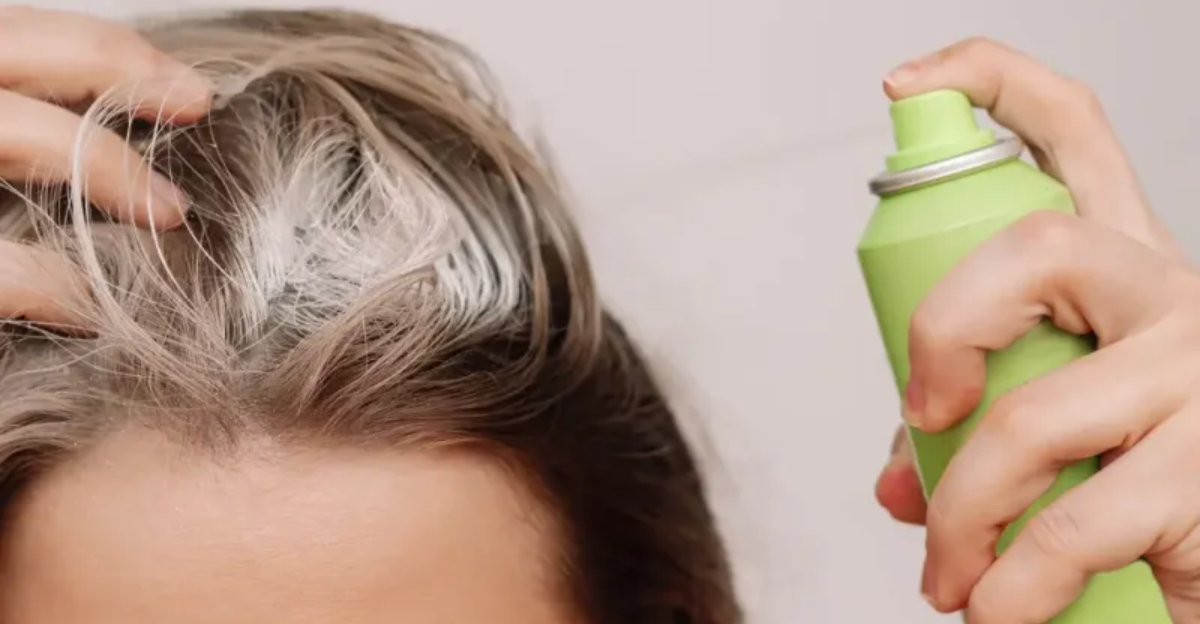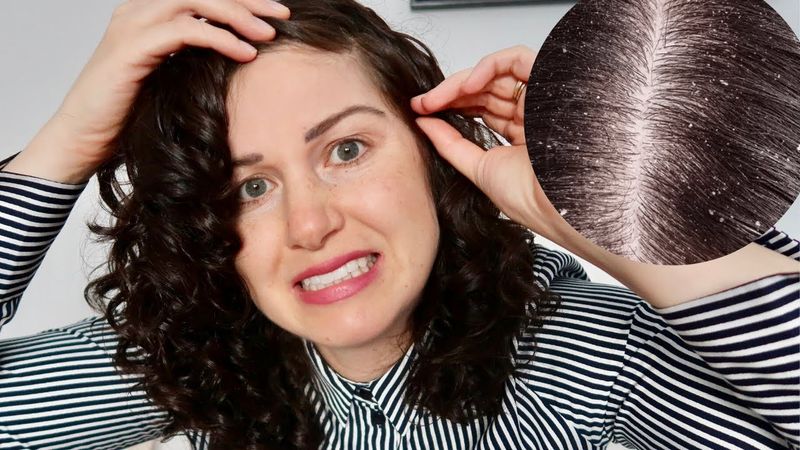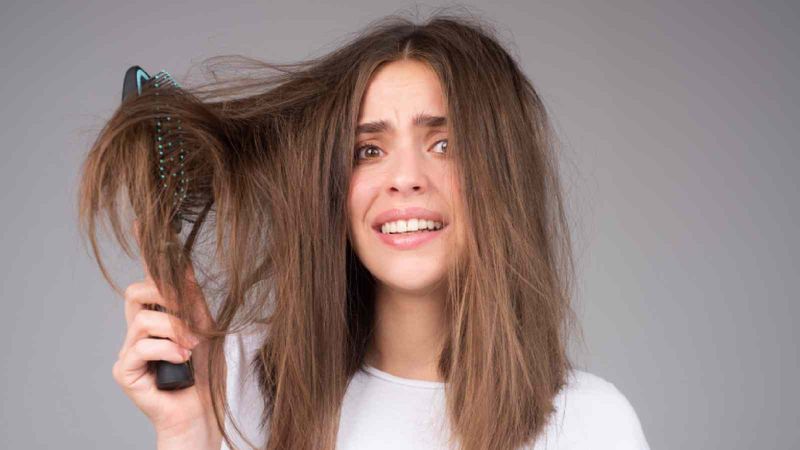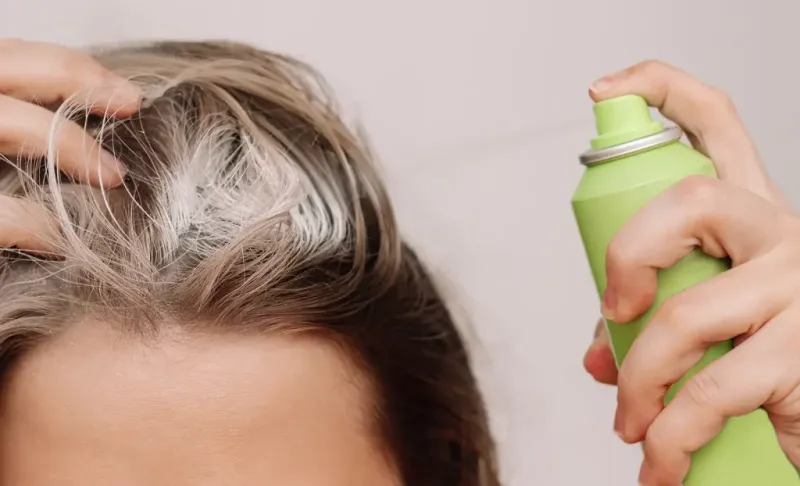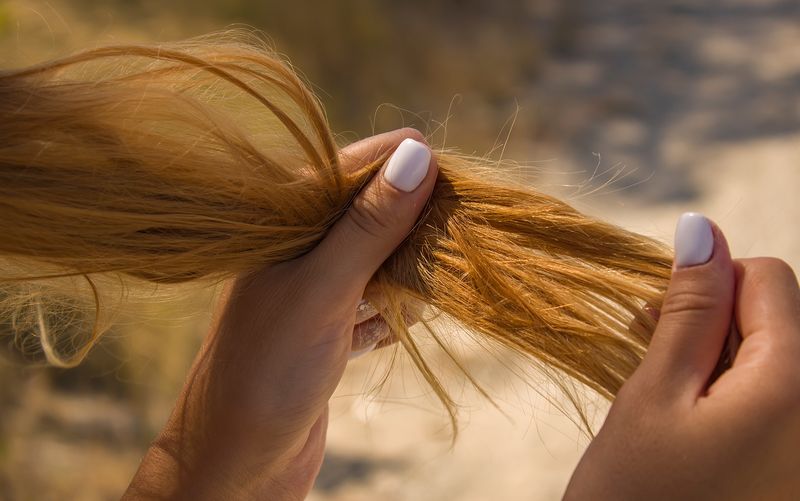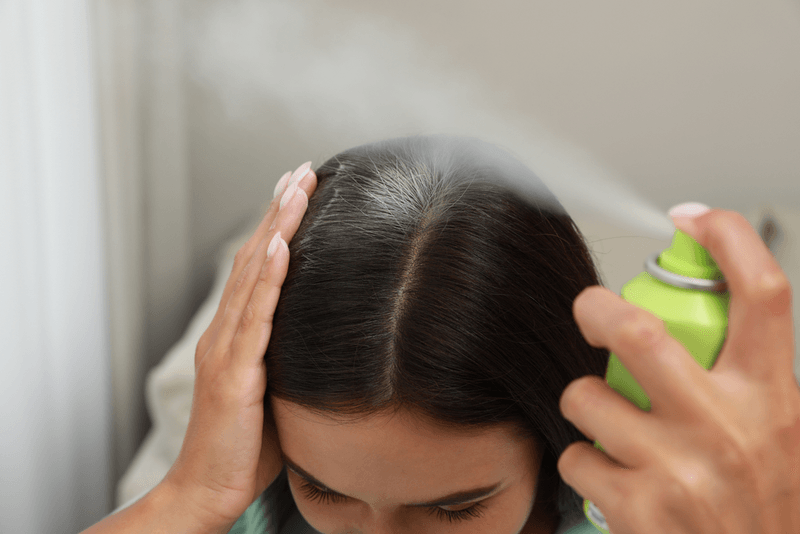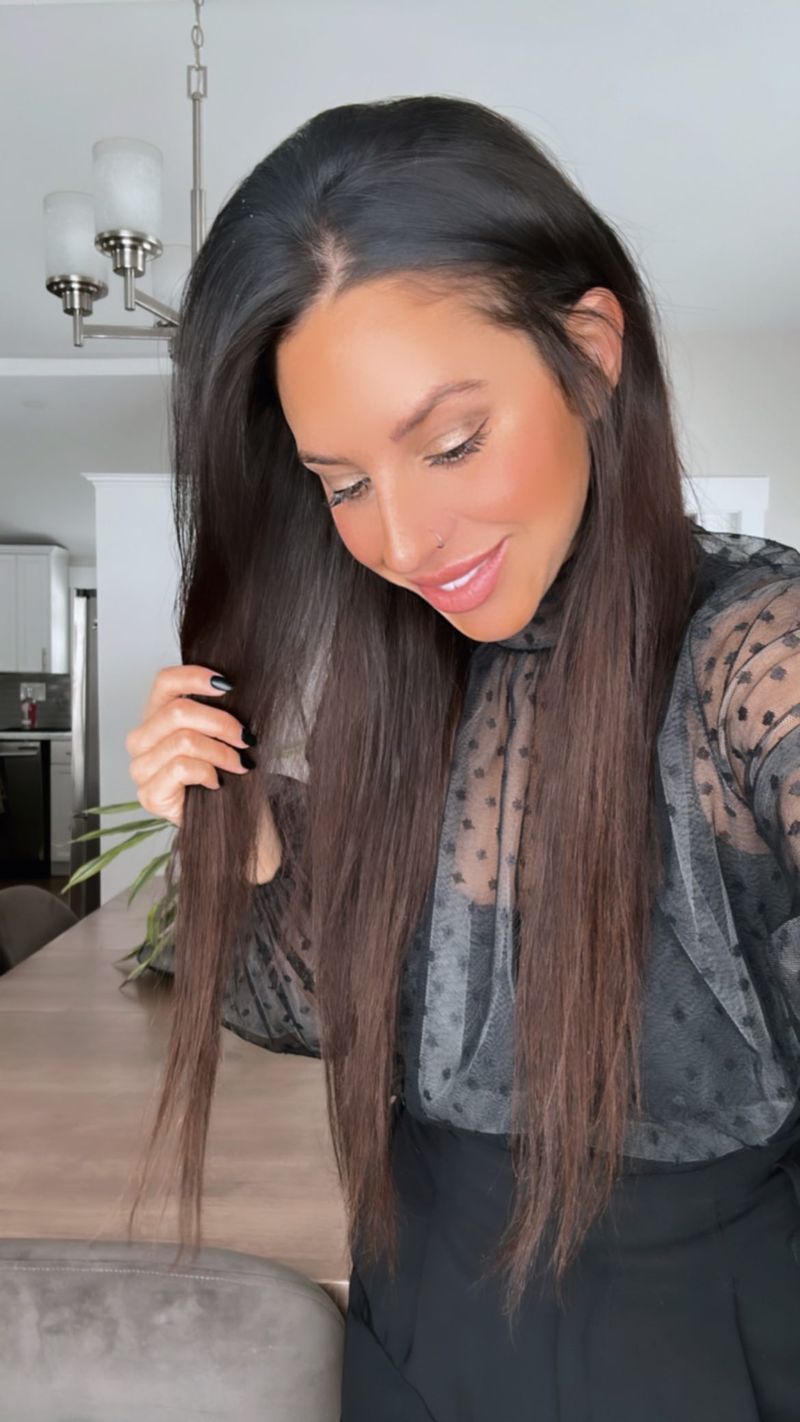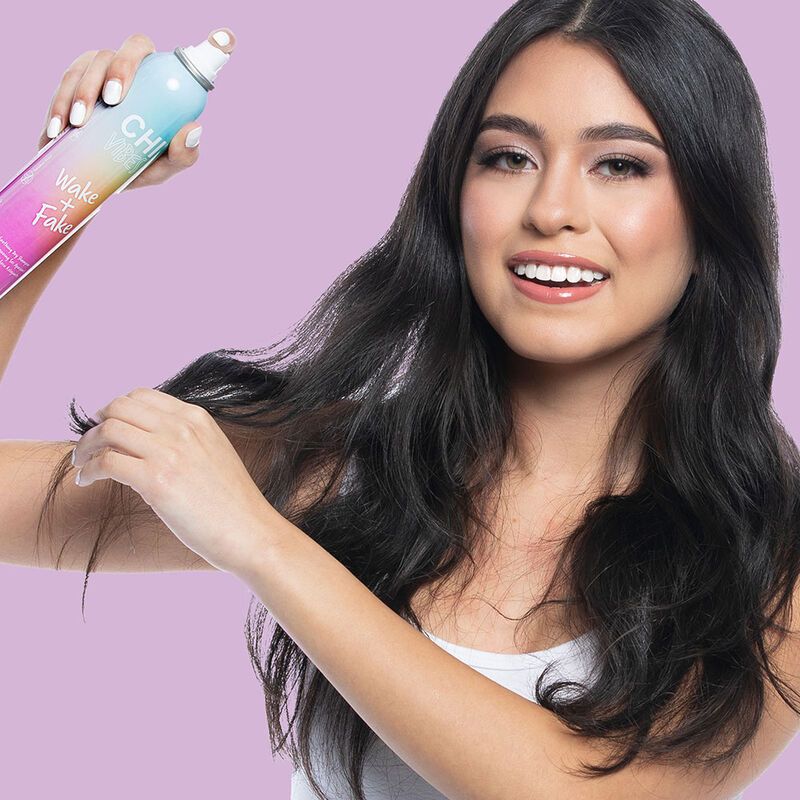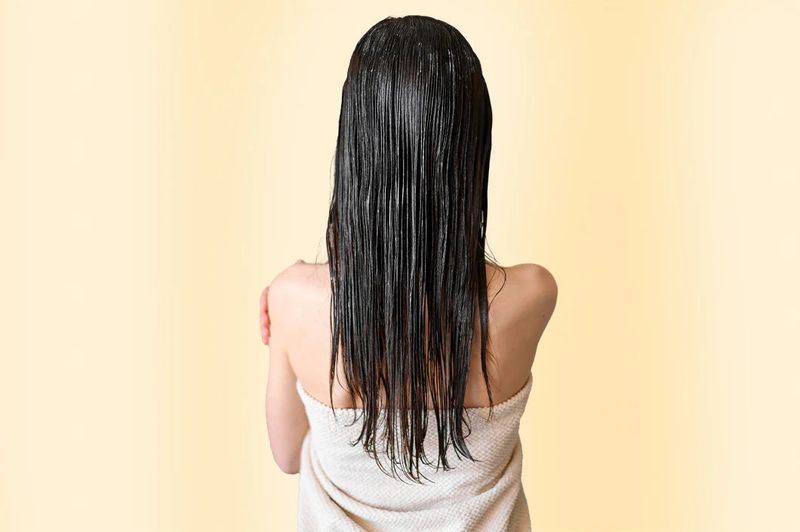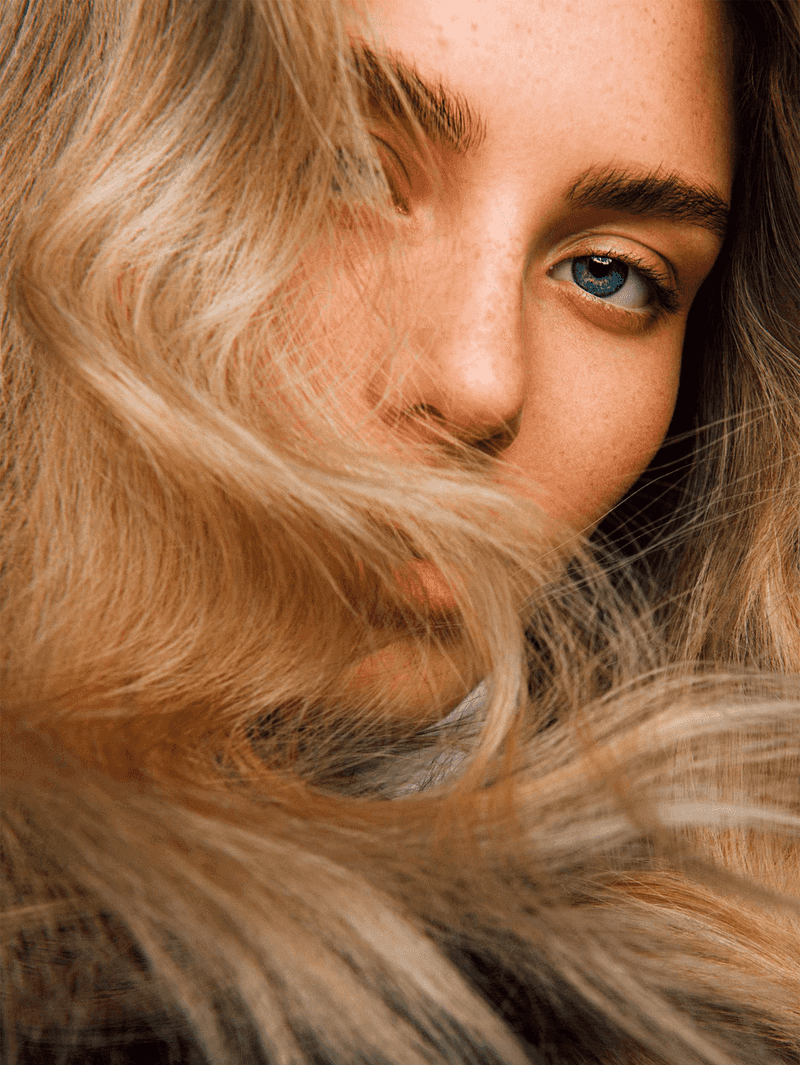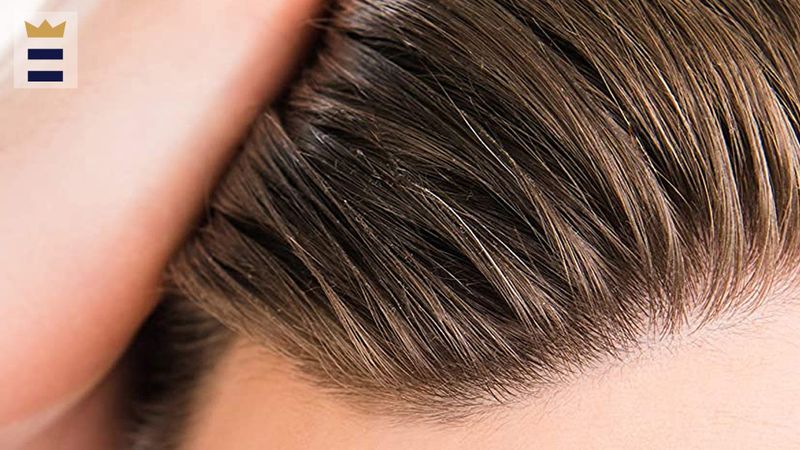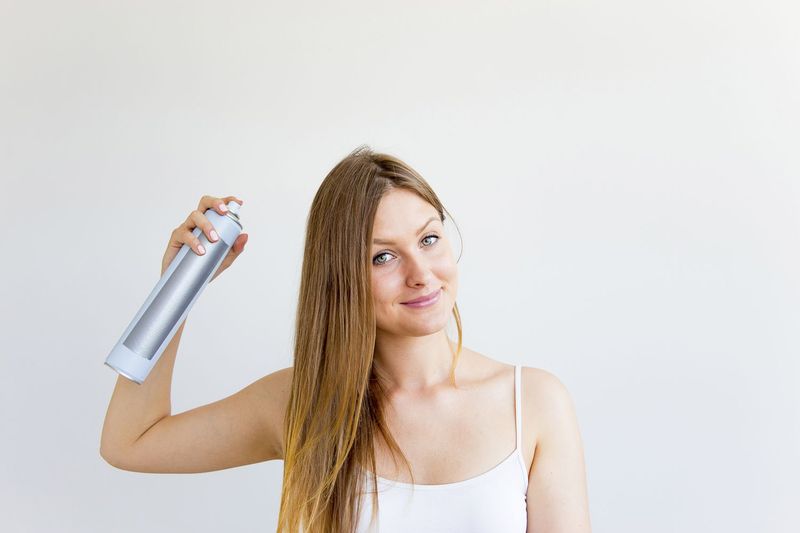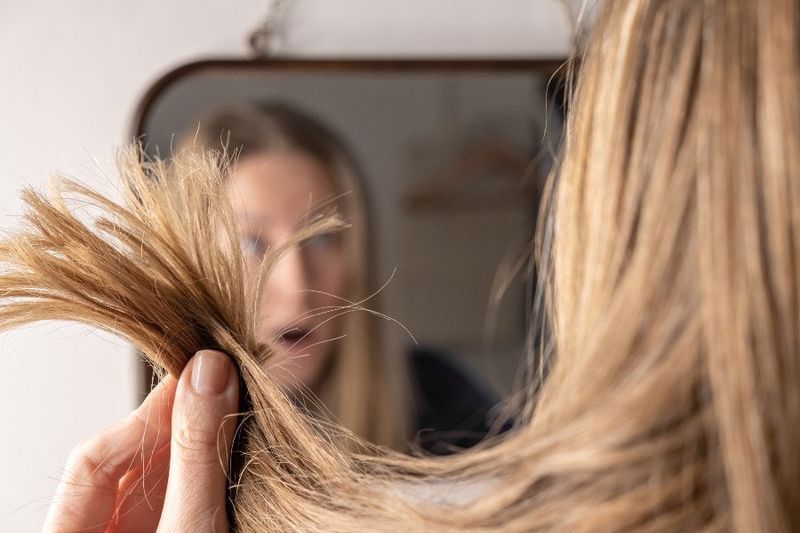That can of dry shampoo sitting on your bathroom counter might be your quick fix for greasy hair days, but it could secretly be causing more harm than good. While dry shampoo offers convenience when you’re rushing out the door without time for a proper wash, overusing it can lead to some serious hair and scalp issues. Let’s explore why your favorite time-saving product might actually be damaging your locks and discover some healthier alternatives.
1. Product Buildup Creates a Grimy Layer
Spraying dry shampoo day after day creates a thick, gunky residue that coats your hair and scalp. This isn’t just gross – it’s problematic! The powdery particles combine with your natural oils and environmental dirt, forming a stubborn layer that regular shampoo might struggle to remove completely.
Over time, this buildup weighs down your strands, making them look dull and lifeless instead of the fresh, clean look you’re hoping for. Your scalp can’t breathe properly under all that residue.
Related: -7 Straight-Hair Problems No One Talks About And 8 Easy Fixes That Shine
Instead, try a clarifying shampoo once weekly to remove buildup, and on no-wash days, use a boar bristle brush to distribute natural oils from roots to ends.
2. Clogged Hair Follicles Lead to Thinning
Your hair follicles need to breathe! When dry shampoo particles settle onto your scalp, they can block the hair follicles, preventing normal growth cycles. Many dermatologists have noticed an uptick in patients experiencing hair thinning related to excessive dry shampoo use.
The starch and alcohol in these products can be particularly problematic, creating a paste-like substance when mixed with your scalp’s natural oils. This clogging effect can eventually lead to follicle damage and even hair loss.
A better alternative? Try a scalp tonic with tea tree oil or witch hazel that refreshes without leaving residue, or simply rinse your roots with plain water on in-between days.
3. Alcohol Content Sucks Out Moisture
Flip over your dry shampoo can and check the ingredients – most formulas contain drying alcohols that absorb oil but also strip away your hair’s natural moisture. That quick fix is actually dehydrating your strands with each application!
The dehydrating effect gets worse with frequent use. Your hair responds by either becoming brittle and prone to breakage or, ironically, by producing even more oil to compensate for the dryness, creating a frustrating cycle.
A gentler option is making your own refresher with a few drops of essential oil in water as a spray, or using a microfiber towel to blot excess oil from your roots without disturbing your hair’s moisture balance.
4. Irritated Scalp Becomes Itchy and Flaky
Notice that persistent itch after using dry shampoo? The chemicals, fragrances, and powders in these products can irritate your scalp, leading to redness, flaking, and uncomfortable itching. For people with sensitive skin or conditions like eczema or psoriasis, dry shampoo can trigger serious flare-ups.
The artificial scents might make your hair smell fresh temporarily, but they’re often harsh on the delicate skin of your scalp. That itchiness isn’t just annoying – it’s your body signaling that something’s wrong!
Switch to a gentle scalp spray with aloe vera or rosewater instead, which can refresh without irritation. A cotton pad soaked in witch hazel also works wonders for oily spots.
5. Disrupted pH Balance Causes Long-term Damage
Your scalp naturally maintains a slightly acidic pH around 5.5, which keeps bacteria at bay and your hair cuticles sealed and healthy. Dry shampoo disrupts this delicate balance, often making your scalp more alkaline and vulnerable to problems.
When your pH balance gets thrown off, your hair cuticles lift up instead of lying flat. This leads to frizz, brittleness, and color fading much faster than normal – not exactly the look you’re going for!
Try apple cider vinegar rinses instead (one tablespoon in a cup of water), which naturally restore proper pH while removing excess oil. Diluted lemon juice can also work as a quick, natural refresher that maintains your scalp’s healthy environment.
6. Aerosol Propellants Create Environmental Concerns
Most dry shampoos come in aerosol cans filled with propellants that aren’t great for your hair or the planet. These chemicals help disperse the product but can leave a residue that builds up on your scalp and damages your hair over time.
Beyond personal impact, those aerosol cans contribute to air pollution and often end up in landfills. Many contain volatile organic compounds (VOCs) that contribute to ground-level ozone formation – yikes!
Consider switching to powder-based dry shampoos that come in recyclable containers or make your own with simple ingredients like cornstarch, rice flour, or arrowroot powder mixed with a few drops of essential oil for fragrance. Your hair and the environment will thank you.
7. Talc Content Raises Health Questions
Some dry shampoos contain talc, a mineral that has faced scrutiny for potential contamination with asbestos in its natural form. While cosmetic-grade talc undergoes purification, health concerns remain about long-term exposure, especially when products are used frequently near your face and breathing zone.
The fine particles can be inhaled during application, potentially irritating your lungs. This is especially concerning if you spray dry shampoo in poorly ventilated bathrooms where particles linger in the air.
Look for talc-free alternatives like rice starch or oat flour-based dry shampoos instead. A simple silk scarf or cotton bandana can also absorb excess oil when wrapped around your hairbrush and gently brushed through your roots.
8. Color-Changing Residue Dulls Your Shine
Ever noticed a strange grayish or white cast in your hair after using dry shampoo? That chalky residue is especially noticeable on darker hair colors, making your expensive salon color look dull and ashy. The white powders in most formulas simply don’t disappear completely, no matter how well you brush them through.
For brunettes and those with black hair, this ghostly effect can be particularly frustrating. Even tinted formulas often leave a strange, matte finish that looks unnatural and draws attention to the fact that you haven’t washed your hair.
Try a tinted dry shampoo specifically for your hair color instead, or embrace natural alternatives like cocoa powder for dark hair or cornstarch for lighter shades when you need a quick refresh.
9. Masking Odors Creates a Funky Fragrance Cocktail
The heavy fragrances in dry shampoo don’t actually clean your hair – they just layer artificial scents on top of your scalp’s natural odors. This creates a strange perfume-plus-sweat combination that can smell worse than if you’d left your hair alone!
Those powerful fragrances can trigger headaches and sensitivity in some people. They’re designed to be strong enough to mask odors, which means they’re often overwhelming, especially in close quarters like offices or elevators.
A gentler option is using a few drops of essential oil on your brush or a light spritz of rosewater on your roots. For a truly natural approach, try brewing strong chamomile or rosemary tea, cooling it completely, and using it as a refreshing scalp spray.
10. Extended Time Between Washes Throws Off Natural Cycles
Relying on dry shampoo for days (or weeks!) between washes disrupts your scalp’s natural oil production cycle. Your scalp gets confused about how much sebum to produce, often going into overdrive and becoming even greasier over time as it tries to compensate for perceived dryness.
Regular water cleansing helps regulate oil production naturally. When you skip too many washes, your scalp can’t find its rhythm, potentially leading to either excessive oiliness or paradoxical dryness as your natural balance gets thrown off.
Instead of extending washes indefinitely, try gradually training your hair with gentle, sulfate-free shampoos used every other day. A scalp scrub with brown sugar and coconut oil once weekly can also help maintain balance without stripping natural oils.
11. Texture Changes Make Styling More Difficult
After multiple applications of dry shampoo, your hair develops a strange, gritty texture that’s hard to style. That initial volume boost quickly turns into a stiff, unnatural feeling that makes your hair resist your styling tools and products.
The powdery residue creates friction between hair strands, leading to more tangles and knots. This makes brushing more difficult and potentially damages your hair as you fight through the resistance.
For texture without the downsides, try a light spritz of salt spray at your roots or a tiny amount of clean styling powder that dissolves more completely. Silk pillowcases can also help maintain your style overnight without adding product, reducing how often you need dry shampoo altogether.
12. Dandruff Confusion Leads to Wrong Treatments
The flaky residue from dry shampoo can look remarkably similar to dandruff, leading many people to misdiagnose their scalp issues. You might start using medicated dandruff shampoos unnecessarily, which can further dry out your scalp and create real problems where none existed before!
This confusion often leads to a frustrating cycle: more dry shampoo creates more flakes, which prompts stronger dandruff treatments, resulting in a drier scalp that produces more oil, requiring more dry shampoo… you get the picture.
Break the cycle by clarifying your hair completely, then using a gentle apple cider vinegar rinse to remove residue. For actual dandruff, try tea tree oil diluted in a carrier oil massaged directly into the scalp instead of harsh medicated products.
13. Hidden Allergic Reactions Develop Gradually
The cocktail of chemicals in dry shampoo – including butane, propane, fragrances, and preservatives – can trigger allergic reactions that develop slowly over time. You might not connect your increasingly sensitive scalp or even respiratory symptoms to your dry shampoo habit.
Contact dermatitis from these ingredients often appears as redness, burning sensations, or even small bumps along the hairline. Some people develop sensitivity after months or years of use, even if they had no initial reaction to the product.
Try switching to hypoallergenic alternatives made with minimal ingredients or create your own simple version with arrowroot powder and a drop of essential oil. A silk scarf wrapped around your pillow can also absorb excess oil overnight without adding any potential allergens.
14. Dependency Cycle Creates Hair Washing Anxiety
Many dry shampoo users develop a psychological dependency on the product, becoming anxious about washing their hair normally. The belief that washing is “bad” for your hair leads to over-reliance on dry shampoo, creating a cycle where your hair and scalp actually deteriorate from lack of proper cleansing.
This mindset can turn into a genuine aversion to regular hair washing. You might find yourself stretching time between washes to unhealthy lengths, believing you’re doing your hair a favor when you’re actually compromising its health.
Break this cycle by reintroducing gentle, sulfate-free washing every 2-3 days. Lightweight, water-based leave-in conditioners can protect your hair between washes without the heavy buildup of dry shampoo. Remember: clean hair is healthy hair!
15. Heat Styling Plus Dry Shampoo Creates Breakage
Combining dry shampoo with heat styling tools is a recipe for disaster! The starchy residue from dry shampoo becomes brittle when heated, causing your hair strands to snap and break. Think of it like cooking – starch hardens when heat is applied.
This combination is especially damaging at your roots where dry shampoo concentration is highest. When you follow up with a hot curling iron or straightener, you’re essentially baking that product into your hair, creating weak points prone to breakage.
Instead, try a heat protectant spray on freshly washed hair, and extend your style with strategic spot-cleaning using a cotton pad with micellar water on your roots. When you do use dry shampoo, avoid heat styling that same day.

